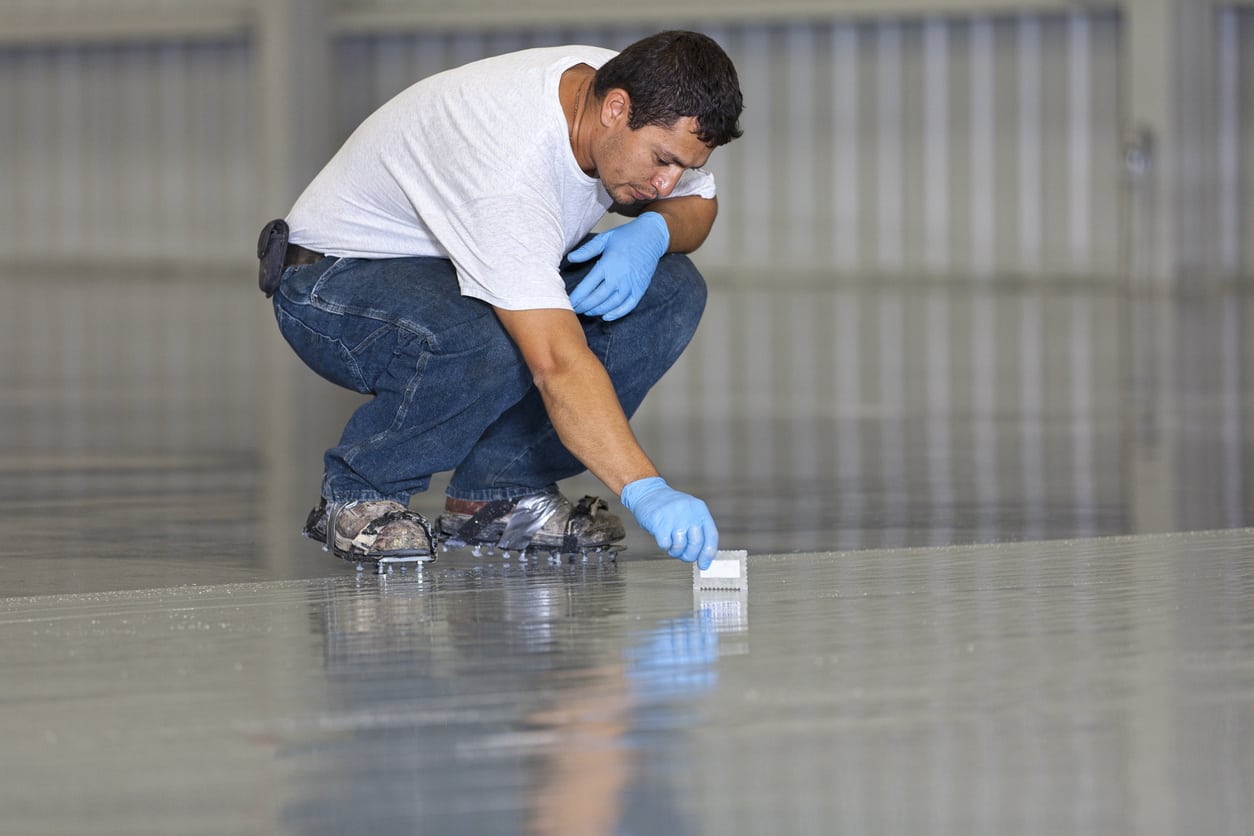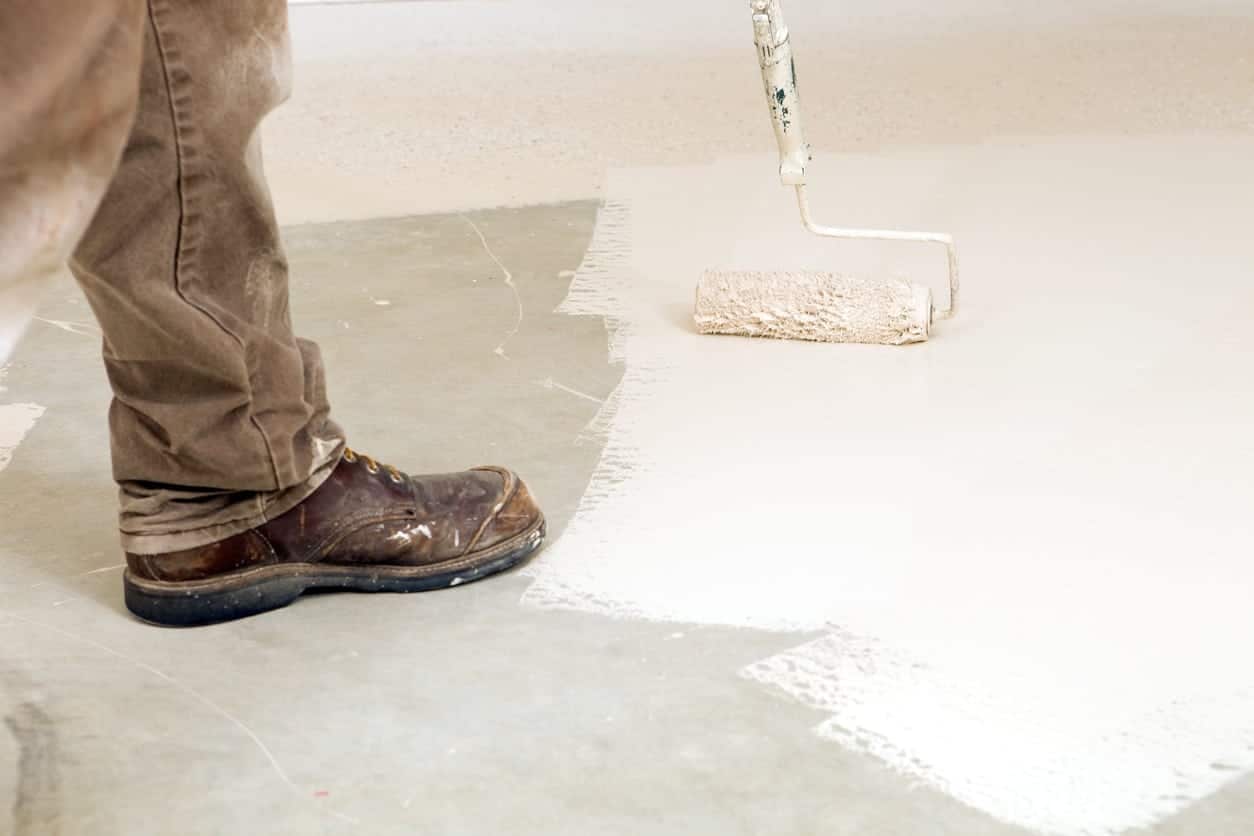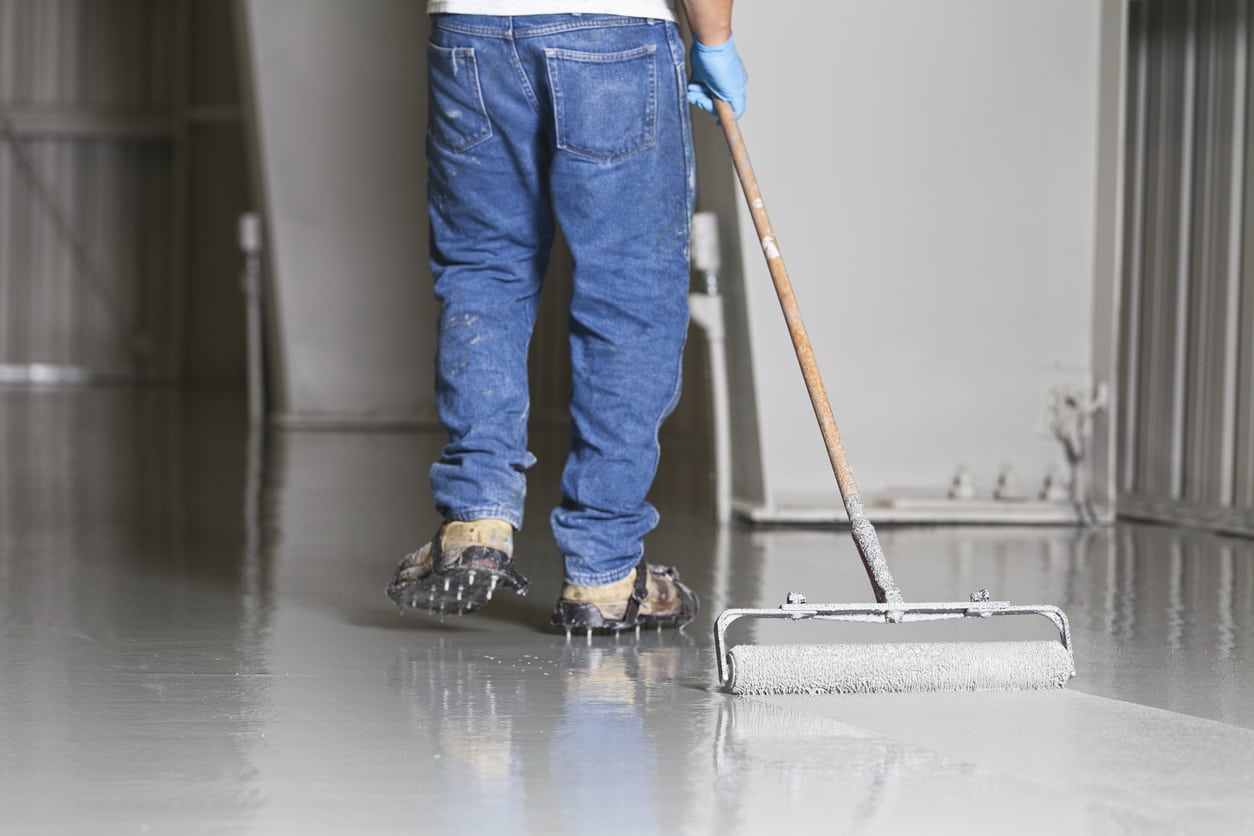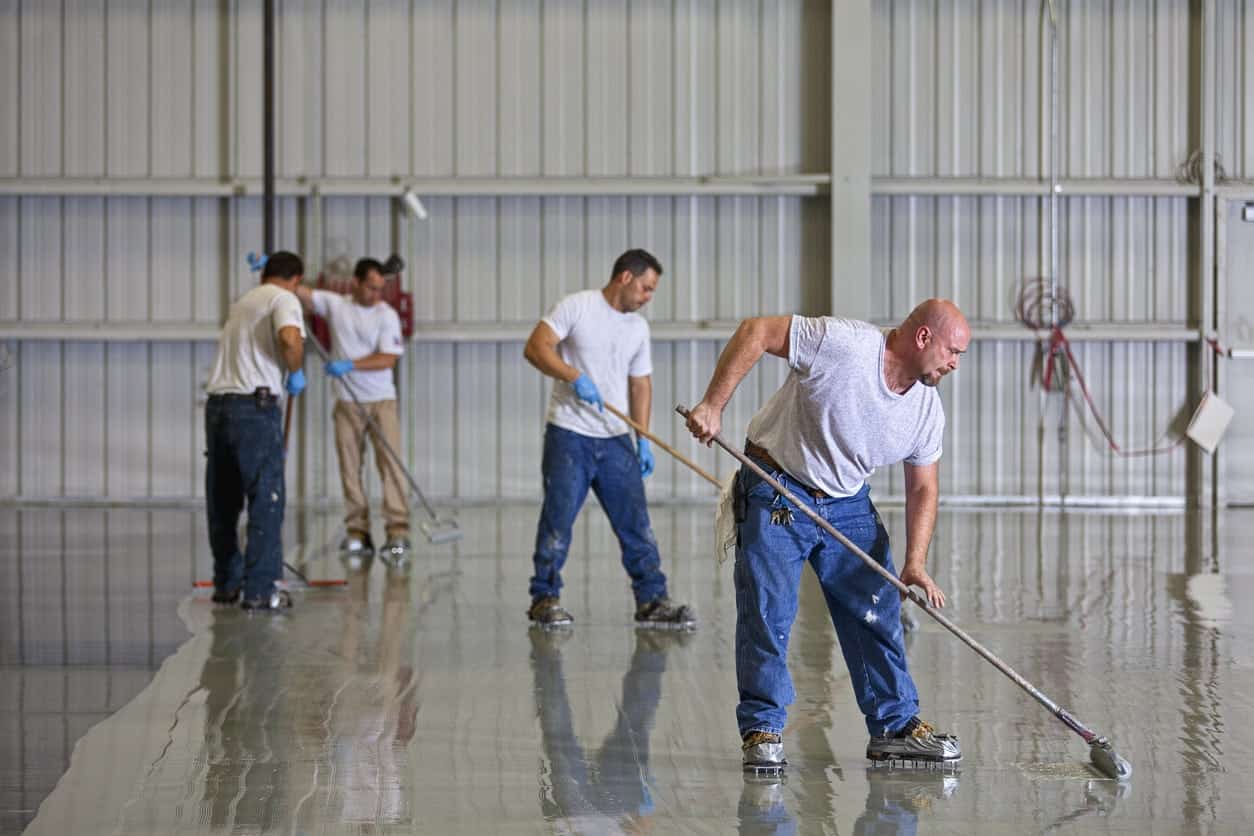So what exactly is an epoxy coating good for? Well for starters have you ever seen a chip floor system? Have you ever seen a floor that holds up extremely well to chemicals, abrasions, and UV exposure? All of these scenarios most likely used an epoxy coating. Epoxies have been used for many years and are commonly applied to garages, warehouses, food preparation kitchens etc. because of their strength to withstand many solvents and chemicals.
Often used in conjunction with vinyl paint chip flakes and urethane top coats epoxies are a fantastic concrete sealing option. One of the downsides of an epoxy is the lengthy cure time. Taking upwards of 7 days to allow heavy traffic can definitely impact a project or large construction job. The most common use for an epoxy is as a primer in a high build floor system. The epoxy is usually first applied as a primer, then another epoxy is used as a base coat ending with a urethane top coat . The use of the three products together builds up the floor to a thick mill for added protection from wear, abrasion and chemicals. Often times epoxies come in clear and colored varieties allowing for decorative finishes with metallic sand or paint chips.
While the concrete sealer market is roughly divided into the two categories of penetrating versus surface sealers, how do you tell which surface sealer is right for your particular project. While there are not a lot of different types of surface sealers, it is important to be knowledgeable of the differences in order to choose the appropriate product.
Acrylic sealers are probably the most common type of sealer. Used for lightweight projects and surface touches, acrylic sealers are solutions comprised of large particles of acrylic sealant suspended in either water or some sort of solvent, depending on if you opt for a water- or solvent-based product. Once applied to the concrete surface, the large particles remain on the surface to be spread out evenly.
Acrylic sealers offer a general level of protection: nothing too comprehensive, but nothing to sneeze at either. An acrylic sealer is a great choice for decorative concrete that is more delicate that poured or stamped concrete, as well for surfaces that do not see a large amount of heavy traffic and risk of abrasions or spills. The better acrylic sealer products offer UV protection, slip resistance, and will resist the passage of water into the concrete. Instead of penetrating within the concrete to chemically react, an acrylic sealer will act more like a raincoat to block the entrance of water at the surface.
Epoxy sealers, on the other hand, are another extremely popular concrete surface sealer. These products are significantly stronger than acrylic sealers, featuring a high level of adhesion to the concrete substrate. Once applied to the substrate, epoxy sealers offer excellent wear and abrasion resistance, all while effectively protecting the surface of the concrete from extreme chemical spills.
Due to their inherent strength, especially compared to an acrylic sealer, epoxies are the sealer of choice for projects that do not require a penetrating sealer. As a surface sealer, their strength, reliability, and longevity cannot be beat. You will commonly find epoxy sealers in industrial warehouses, large retails stores, and even airports – all of these places feature a high level of traffic that can lead to disastrous wear. Epoxies, like acrylics, are surface-level concrete sealers that are the right choice for more in-depth projects requiring a more comprehensive level of protection, while acrylics are better for residential and lighter applications.
Epoxies, urethanes, and polyaspartics are all very similar types of concrete sealers. They are all surface sealers, meant to be spread evenly over the surface of a concrete slab, protecting it from all sorts of damage without penetrating past the surface. They are all also typically two-component polymers (though there are one-component products out there), meaning they have to be mixed prior to application.
Epoxies, urethanes, and polyaspartics are best suited for high traffic areas, such as the floors of large retail stores, industrial complexes, warehouses, and airports. All of these are examples of buildings whose floors are at a high risk of chemical spillage, abrasion, and other types of potential damage. The three types of sealer are all extremely tough and durable, making them all great choices.
The biggest difference comes with their chemical compositions. Epoxies are a little stronger than urethanes and polyaspartics, making them great basecoats and standalone layers. They bond extremely well to rough concrete surfaces, and they have a wide variety of features making them great for bottom layers. Urethanes can be applied as standalone products, but they are not meant for surfaces that are as rough. Polyaspartics are simply a type of urethane, typically aliphatic urethanes. They provide the same level of protection, but they also have the added bonus of drying incredibly fast. This quality makes them well suited to projects in retail stores or buildings that need to be open and functioning the next day.
All three of the products are strong and similar, but they also all work best as part of an epoxy system. Epoxy systems are simply the combination of one or two epoxy basecoats, followed by a urethane or polyaspartic topcoat, depending on your particular project. You can even add some sort of decorative touch to the project, such as adding sand or paint chips after the epoxy basecoats but before the urethane or polyaspartic topcoat. When applying an epoxy system, you must wait for each layer to dry completely before adding additional layers. If you want the best, strongest, and longest lasting results, you should elect to use an epoxy floor system, as this will ensure your concrete remains visually and structurally sound for years to come.
What is an epoxy concrete sealer and what is the best epoxy concrete sealer? Epoxy concrete sealers are topical film forming concrete coatings that produce a hard long lasting abrasion resistance surface. They are an ideal product for resurfacing a concrete floor to product the floor surface. Epoxies exhibit similar qualities to acrylics in regards to characteristics but they are different in performance, lifespan and of course price. Epoxies are an invisible protective barrier that adheres well to concrete factory floors, garage floors and restaurants. A harder material than acrylics they also come in solvent and water based versions. Some water based epoxies are non-porous allowing moisture to escape. But most epoxies do not tolerate moisture well and they are not very breathable. This means that bubbles may occur if water vapor transmission is trapped under the surface after applying an epoxy. Please note that Epoxies should not be applied over a slab with a moisture problem. Epoxies are sometimes used as primers and provide outstanding resistance to chemicals. Since epoxies tend to yellow when exposed to UV rays, they are typically used only indoors. Epoxies are excellent for repelling water and they tend to be used on concrete countertops. Be aware that most epoxies are two component products that are mixed together and then rolled onto concrete. Some negatives include the fact that they require more floor preparation, take a long time to cure and the installation process can be confusing and time consuming. But they last a longer time before needing to be reapplied than say an acrylic.
Our take : Best Epoxy Concrete Sealers
We recommend using an epoxy in a garage or restaurant when you have a few days to let it dry. They are stain proof but tend to make the concrete look like plastic. Some of the top epoxies on the market include Epoxy 325 and Euco #512 VOX Epoxy Sealer.
Recommended For:
Floors with high traffic areas, cement overlays and concrete counter tops.




